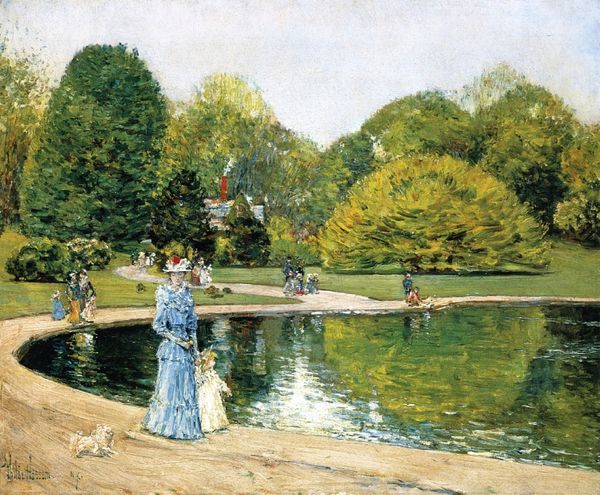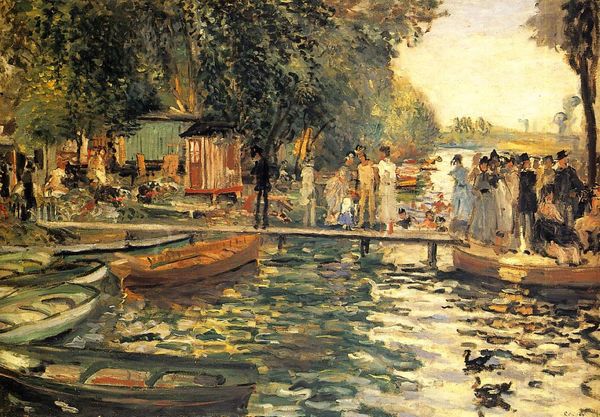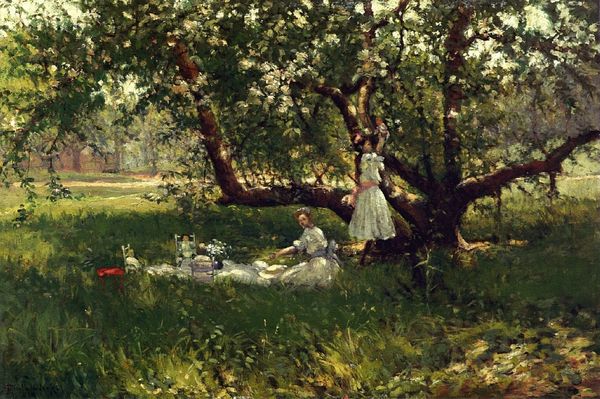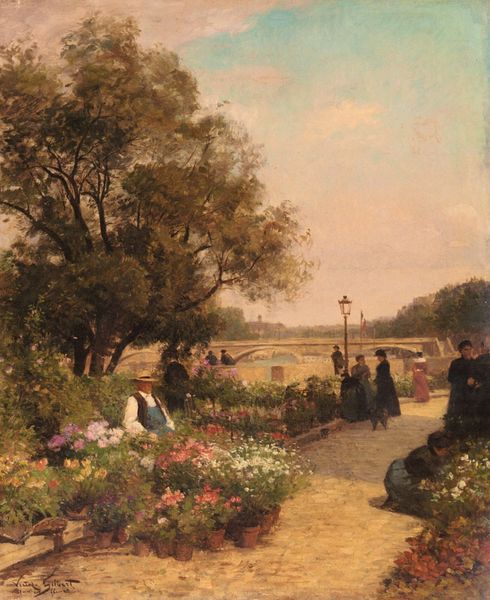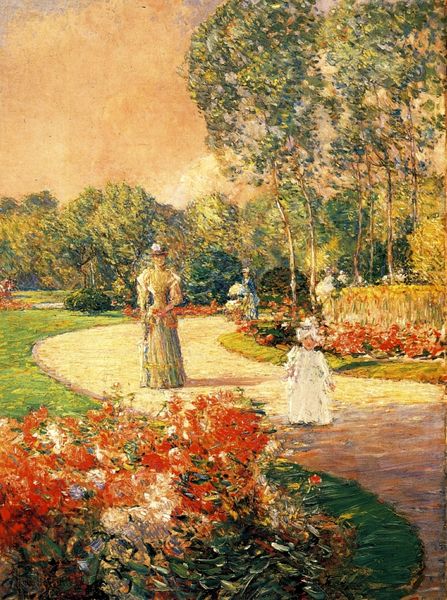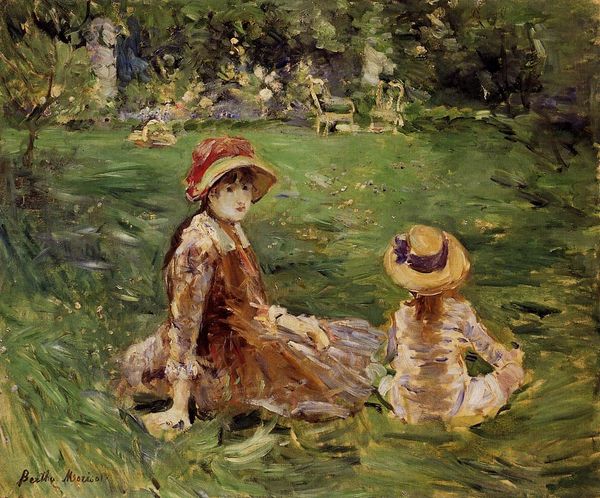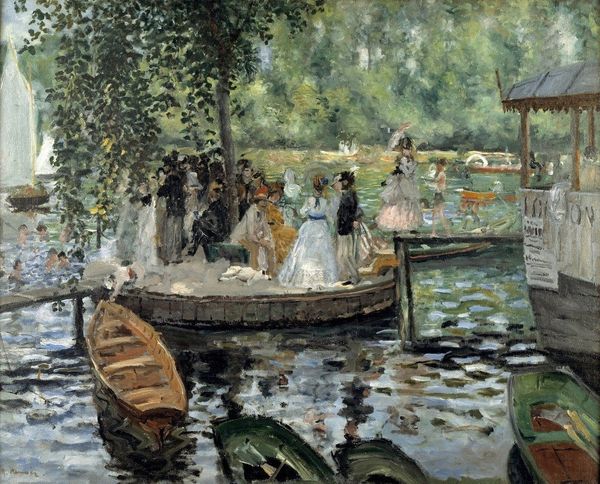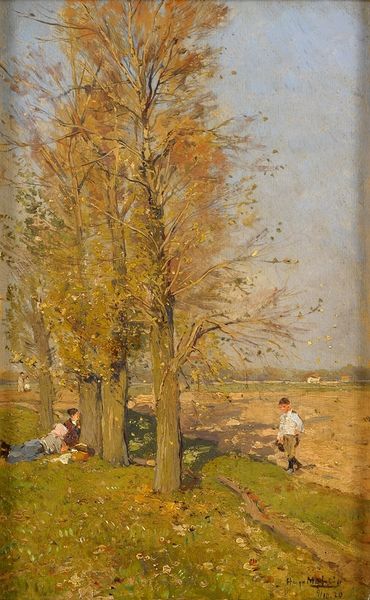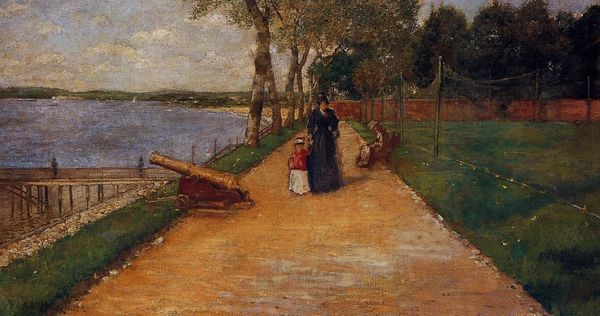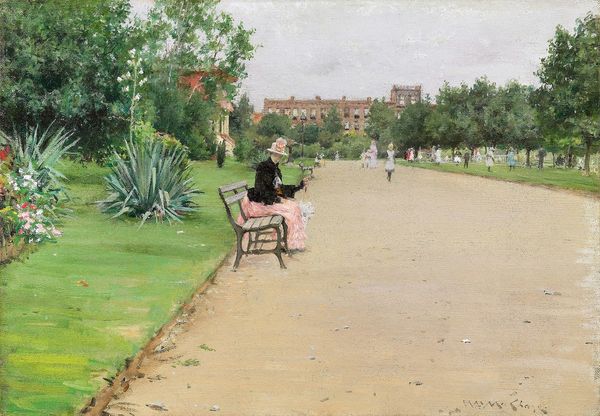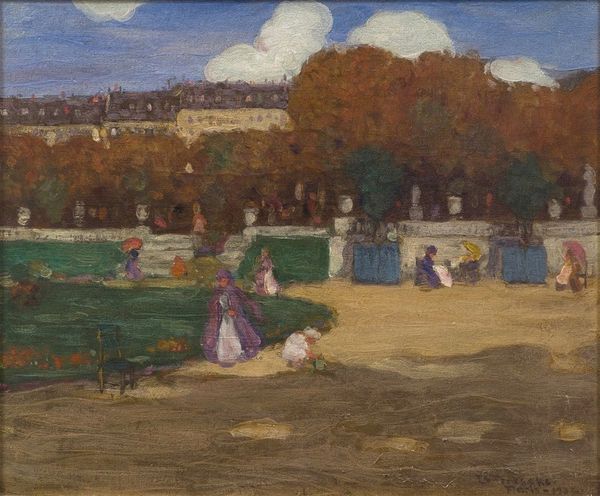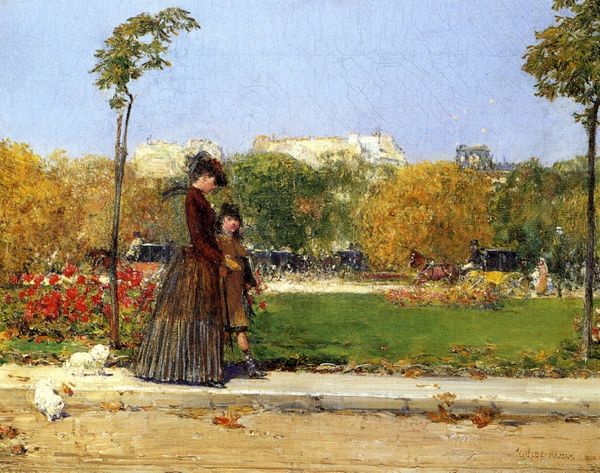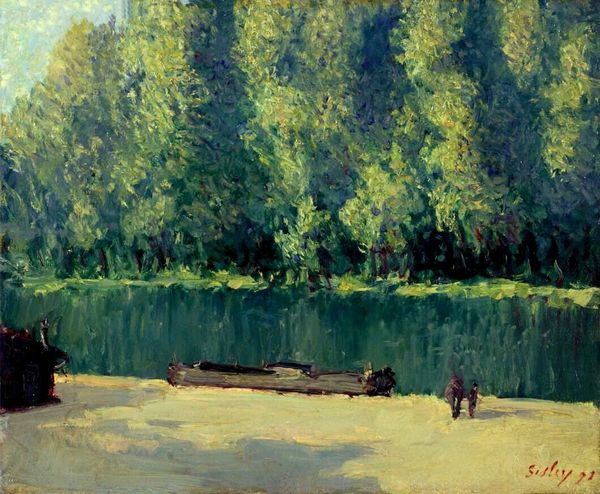
plein-air, oil-paint
#
portrait
#
impressionism
#
plein-air
#
oil-paint
#
landscape
#
oil painting
#
cityscape
#
genre-painting
Copyright: Public domain
Curator: What strikes me first is the sheer delight captured in this scene. The way the light shimmers on the water… Editor: Before we dive into the atmosphere, let's provide some context. This is William Merritt Chase's "The Lake for Miniature Yachts," painted in 1888 using oil on canvas. Curator: Right. And viewing this today, I am struck by the painting as not only visually pleasing, but also as a symbol of leisure available to a select few during this time, in an urban space constructed and maintained by many who would not have enjoyed this specific form of leisure. It highlights the class dynamics inherent in turn-of-the-century urban parks. Editor: It’s interesting to consider what's been left out: what kinds of labor were involved in manufacturing the toy yachts, for example? And who had access to the raw materials and tools for leisure, versus sustenance? Chase, influenced by the plein-air movement, certainly emphasizes the sensory experience—the light, the air. But he doesn't shy away from depicting burgeoning consumer culture, miniature versions of seafaring commerce right on this ornamental lake. The children wear manufactured clothing of light fabrics, and you can see the touches of material excess here that speak to the emerging upper middle class. Curator: Precisely. The composition further emphasizes this divide, with a clear foreground dedicated to children and their leisure pursuits. The soft brushstrokes seem to subtly veil any harder realities. Is it fair, even today, that parks are enjoyed disproportionately across lines of wealth and access? Chase presents what appears idyllic; what were the real-world consequences that provided the foundation for such a setting? Editor: We shouldn’t view it as a condemnation. Chase himself would likely have been blind to his privilege, although this painting indirectly shows us that material privilege itself creates a historical positionality. Curator: I agree. By acknowledging both the aesthetic qualities of Chase's impressionistic style and analyzing the social stratification, we gain a far richer reading. Editor: Absolutely, understanding the social context—and the materials that comprise both the world of the painting and its very creation—enriches our perception of both the painting, and the city it depicts.
Comments
No comments
Be the first to comment and join the conversation on the ultimate creative platform.
